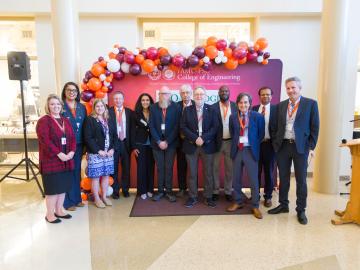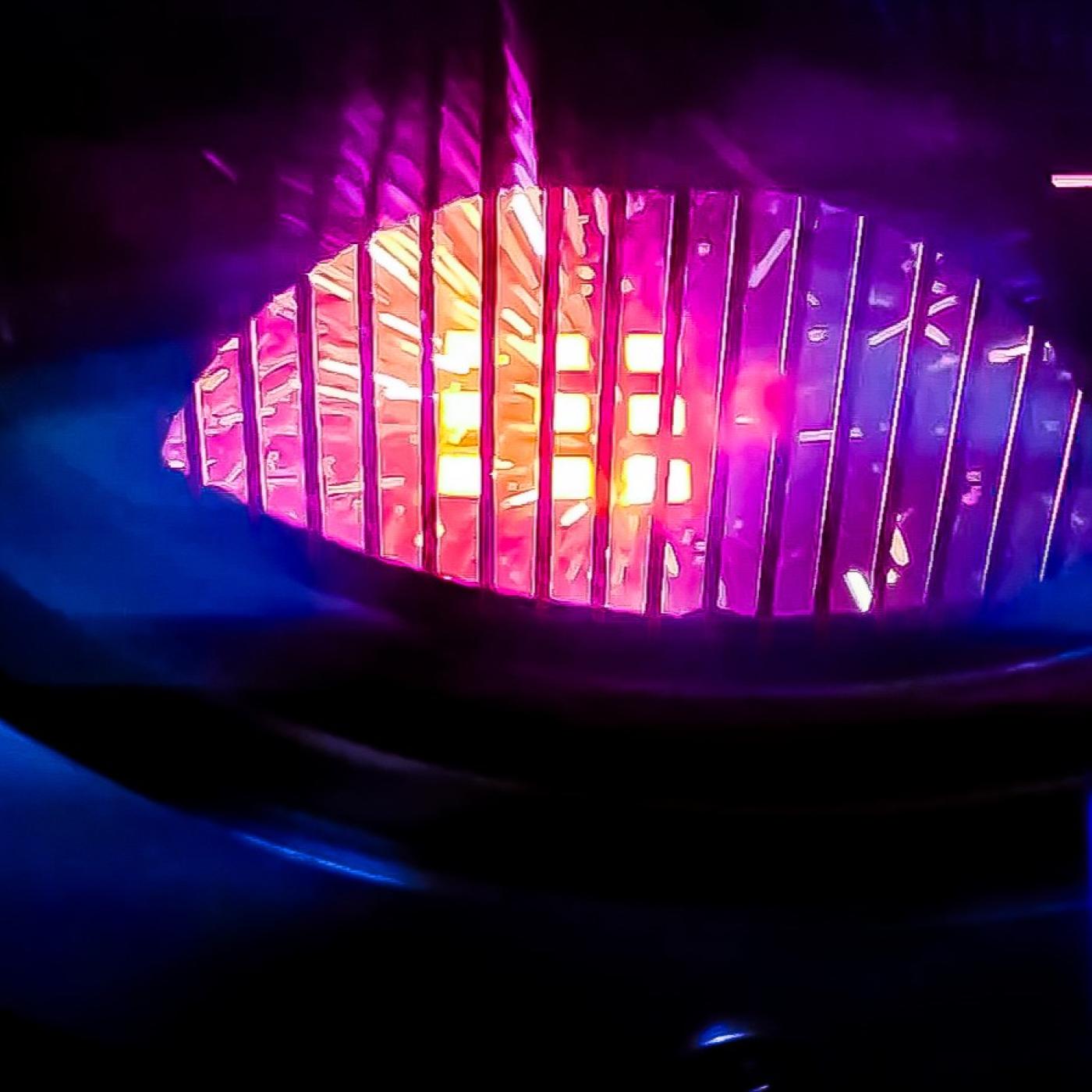
Filter News
Area of Research
- Advanced Manufacturing (1)
- Biology and Environment (38)
- Clean Energy (55)
- Computational Engineering (1)
- Computer Science (1)
- Fusion and Fission (6)
- Isotope Development and Production (1)
- Isotopes (16)
- Materials (68)
- Materials Characterization (1)
- Materials for Computing (8)
- Materials Under Extremes (1)
- National Security (7)
- Neutron Science (49)
- Nuclear Science and Technology (5)
- Supercomputing (35)
News Type
News Topics
- (-) Bioenergy (41)
- (-) Biomedical (28)
- (-) Clean Water (9)
- (-) Composites (14)
- (-) Frontier (18)
- (-) Grid (23)
- (-) Isotopes (30)
- (-) Materials Science (66)
- (-) Neutron Science (61)
- 3-D Printing/Advanced Manufacturing (59)
- Advanced Reactors (13)
- Artificial Intelligence (42)
- Big Data (16)
- Biology (45)
- Biotechnology (12)
- Buildings (25)
- Chemical Sciences (41)
- Climate Change (39)
- Computer Science (75)
- Coronavirus (23)
- Critical Materials (13)
- Cybersecurity (23)
- Decarbonization (37)
- Education (3)
- Element Discovery (1)
- Energy Storage (57)
- Environment (75)
- Exascale Computing (13)
- Fossil Energy (1)
- Fusion (24)
- High-Performance Computing (40)
- Hydropower (2)
- ITER (3)
- Machine Learning (21)
- Materials (68)
- Mathematics (5)
- Mercury (6)
- Microelectronics (1)
- Microscopy (25)
- Molten Salt (3)
- Nanotechnology (32)
- National Security (34)
- Net Zero (6)
- Nuclear Energy (42)
- Partnerships (30)
- Physics (40)
- Polymers (17)
- Quantum Computing (12)
- Quantum Science (30)
- Renewable Energy (1)
- Security (18)
- Simulation (15)
- Space Exploration (3)
- Statistics (1)
- Summit (23)
- Sustainable Energy (45)
- Transformational Challenge Reactor (4)
- Transportation (37)
Media Contacts

The Advanced Plant Phenotyping Laboratory at ORNL utilizes robotics, multi-modal imaging, and AI to enhance understanding of plant genetics and interactions with microbes. It aims to connect genes to traits for advancements in bioenergy, agriculture, and climate resilience. Senior scientist Larry York highlights the lab's capabilities and the insights from a new digital underground imaging system to improve biomass feedstocks for bioenergy and carbon storage.

Oak Ridge National Laboratory has launched its Neutron Nexus pilot program with Florida Agricultural & Mechanical University and Florida State University through the FAMU-FSU College of Engineering. The first program of its kind nationwide, it’s aimed at broadening and diversifying the scientific user community with outreach to universities and colleges.

A study led by the Department of Energy’s Oak Ridge National Laboratory details how artificial intelligence researchers created an AI model to help identify new alloys used as shielding for housing fusion applications components in a nuclear reactor. The findings mark a major step towards improving nuclear fusion facilities.

A new technical collaboration program at the Department of Energy’s Oak Ridge National Laboratory will help businesses develop and launch electric grid innovations. Sponsored by the Transformer Resilience and Advanced Components program in DOE’s Office of Electricity, the initiative will provide companies with access to national laboratory resources, enabling them to capture market opportunities.

Distinguished materials scientist Takeshi Egami has spent his career revealing the complex atomic structure of metallic glass and other liquids — sometimes sharing theories with initially resistant minds in the scientific community.

ORNL’s Matthew Loyd will receive a Department of Energy Office of Science Early Career Research award.
After retiring from Y-12, Scott Abston joined the Isotope Science and Engineering Directorate to support isotope production and work with his former manager. He now leads a team maintaining critical equipment for medical and space applications. Abston finds fulfillment in mentoring his team and is pleased with his decision to continue working.

A team led by scientists at ORNL identified and demonstrated a method to process a plant-based material called nanocellulose that reduced energy needs by a whopping 21%, using simulations on the lab’s supercomputers and follow-on analysis.

DOE commissioned a neutron imaging instrument, VENUS, at the Spallation Neutron Source in July. VENUS instrument scientists will use AI to deliver 3D models to researchers in half the time it typically takes.

Jeremiah Sewell leads a team at ORNL, working on xenon-129 production for lung imaging. Reflecting on his career, Sewell views each opportunity as a "door" he steps through, leveraging over 25 years of experience in nuclear power and centrifuge operations to advance the facility’s mission.


